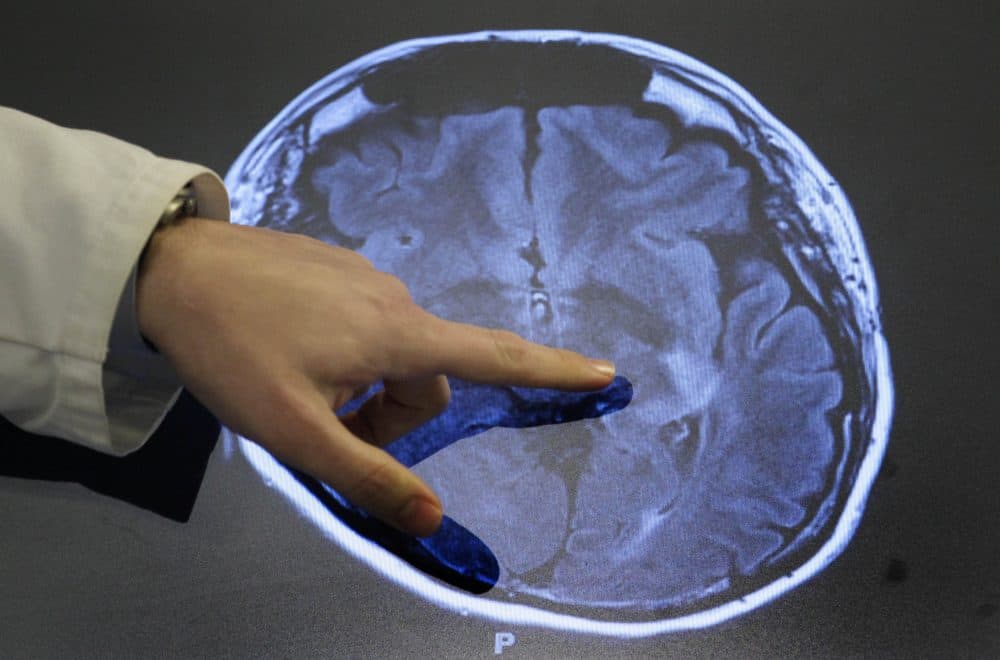But were they really dormant? Ot just not not connected up through the white matter because the white matter was damaged? I was unable to move my left toes for the first three years. With no effort to try to move them they came back, I can only assume that the white matter underlying them reconnected.
Brain Circuits Thought Long Dead After Stroke Might Just Be Dormant

Doctors involved in a study
using adult stem cells to treat stroke patients were shocked at how
successful the therapy was in some cases. While patients generally show
very little improvement after six months, a few regained movement and
speech years later.
Here & Now's Robin Young talks with Dr. Gary Steinberg, professor and chair of neurosurgery at Stanford University and the lead researcher on the project.
Interview Highlights
On how adult stem cells work
"There
are many types of stem cells, of course. Adult stem cells are one
particular type. And they have the ability to turn into certain kinds of
cells in the body. But the interesting thing in terms of what we did is
that these cells don't actually integrate into the brain long term and
become neurons to reconstitute circuits. What they do is to pump out
very powerful growth factors, molecules and proteins that enhance native
mechanisms of recovery, such as new synapses of neurons that are there,
new blood vessels, and they have a very profound effect on modulating
the immune system. And in that way, what we believe they do is to turn
the adult brain into a neonatal or infant brain, which has a lot of
ability to recover after injury."
On the study revealing that what wasn't functioning in some stroke patients' brains was dormant, rather than dead
"That
was something we didn't expect. We were very pleased to see that the
study, in 18 patients, showed that the transplant of these stem cells
into the brain in chronic stroke patients was safe and feasible, but we
were stunned to find that the patients improved. Overall, three-quarters
of the patient showed a, what's called 'meaningful recovery' over a
course of six months, sustained at 12 months and now we know it's
sustained at 24 months. That means their life was made better, and we
had a couple of miracle patients who showed very, very dramatic
recovery."
"To tell you the truth, even 10 years ago, we couldn't dream about recovering function in patients with neurologic disorders and disability."Dr. Gary Steinberg
On the process of injecting the stem cells
"So
what we do is to attach a, what's called the stereotactic frame, to the
head. It's like a GPS system of guidance for the brain, and that allows
us to implant the cells around the stroke with submillimeter accuracy.
Then we make a little hole about the size of a nickel in the bone, and
using a very fine needle, we transplant the cells into the area just
surrounding the stroke — not directly in the stroke, because that's a
very inhospitable environment. But the cells survive just outside the
stroke, and they somehow do their thing to resurrect the circuits."
On how stem cells helped Sonia Coontz, who suffered a stroke in 2011
"Sonia,
it was two years out from a stroke that affected her left brain, so she
was unable to move her arm or hand at all. She could walk with great
difficulty, she didn't wanna get married because she felt she'd be
embarrassed walking down the aisle, and you couldn't understand her
speech. After we transplanted the cells, she made a dramatic and
near-miraculous recovery, to the point she's walking well, she got
married, she had a baby boy 14 months ago, who's doing very well. And
her speech, while not completely normal, is very, very understandable."
On cautions when it comes to the study's results
"We're
very excited about these results. However, we don't wanna overpromise.
This was an early phase study, only 18 patients, we just completed
enrollment in a larger, multi-center, double-blind controlled study of
156 patients throughout the country, where a third of the patients do
not get the cells, they only get a partial hole in the skull. And the
only people who know are the seven or eight people in the operating room
who did the procedure. So we'll have the results of this larger phase
two study in about a year and a half, and if that confirms what we found
in the first study, it would lead to a definitive phase three study of
several hundred patients with controls. And if that's positive, and
shows benefit, we'll be able to commercialize the technique, and it'll
become available for everybody."
On the magnitude of the findings
"I'm
shocked. To tell you the truth, even 10 years ago, we couldn't dream
about recovering function in patients with neurologic disorders and
disability. Now we know that those circuits, which we thought were
irreversibly damaged or dead, are not. We just have to figure out how to
resurrect them. And it may apply to disorders other than stroke, such
as spinal cord injury, traumatic brain injury and even degenerative
diseases like Parkinson's disease, Lou Gehrig's disease and maybe even
Alzheimer's disease."
This segment aired on November 30, 2017.
Related:
- Smithsonian: A Neurosurgeon’s Remarkable Plan To Treat Stroke Victims With Stem Cells
- 20-Something Stroke Survivor On Recovery, The Brain And Parenting With Physical Challenges
- Health Conditions That Increase Stroke Risk Rise Across All Ages, Races
- A Lazarus Patient And The Limits Of A Lifesaving Stroke Procedure
Support the news
Dean,
ReplyDeleteI was in the Phase 2 trial with 156 participants that this story is about. I had no improvement and do not know whether I was in the placebo group yet. That will be interesting.